Understanding the Potential of Mindfulness in Autism Support
Mindfulness practices have gained recognition as effective tools for improving mental health and emotional regulation across diverse populations. Recent research underscores their particular relevance for individuals with autism spectrum disorder (ASD), offering accessible strategies to manage stress, enhance social skills, and foster overall well-being. This article explores how tailored mindfulness techniques serve as supportive interventions for autistic individuals, their families, and caregivers.
Core Benefits of Mindfulness for Autism Well-Being
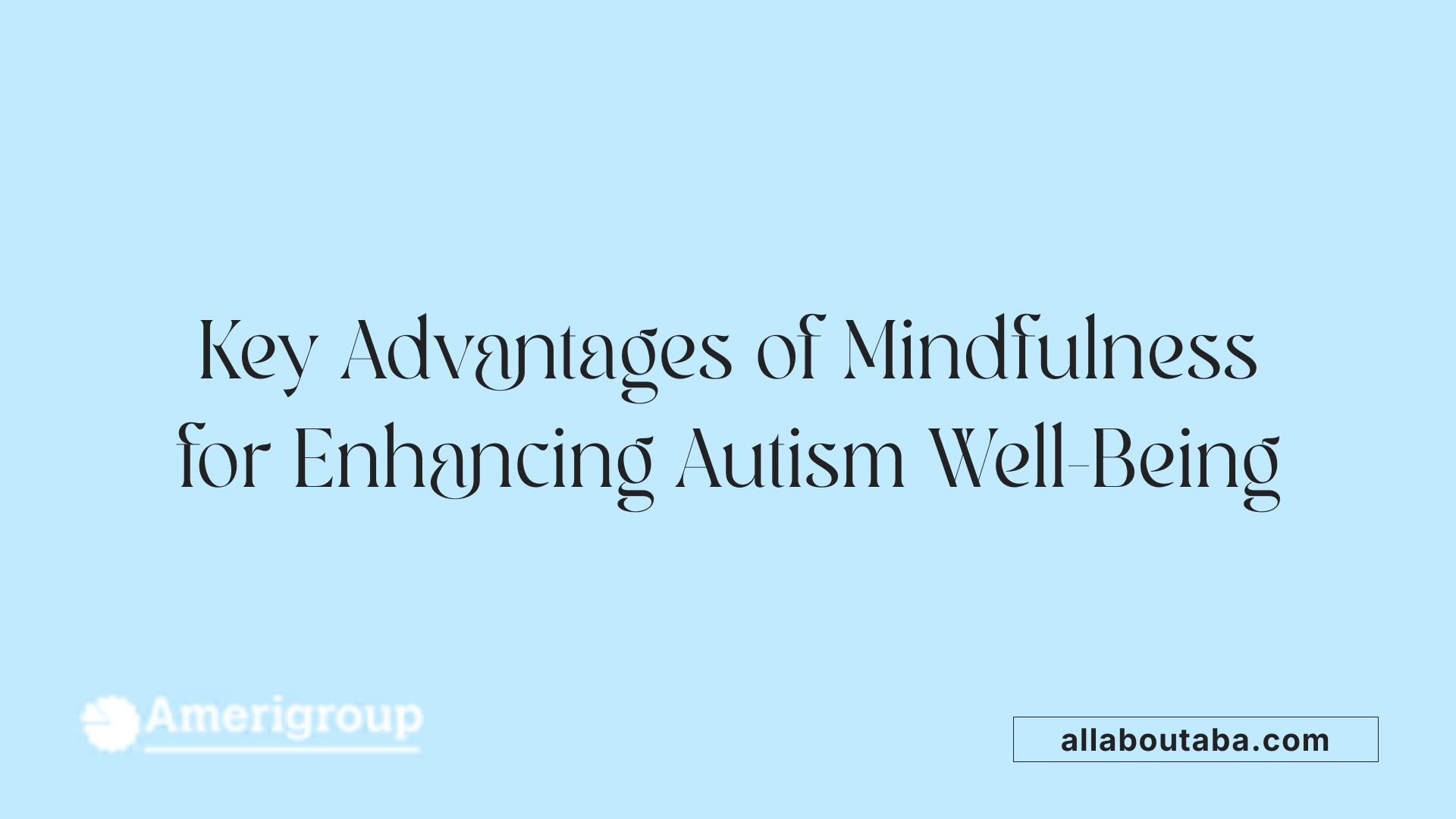
What are the core benefits of mindfulness practices for supporting the well-being of individuals with autism?
Mindfulness practices have shown to offer numerous advantages tailored to the needs of individuals with autism. One of the most significant benefits is the improvement in emotional regulation. Through mindfulness, individuals learn to understand and manage their emotions better, which helps reduce feelings of anxiety and depression.
Research indicates that mindfulness can lead to reductions in stress and anxiety, common challenges among autistic individuals. Regular practice helps in calming the mind, fostering relaxation, and promoting a sense of inner peace.
Beyond emotional benefits, mindfulness interventions are also linked to enhancements in social and cognitive skills. Many programs have demonstrated increased social responsiveness and better focus, aiding individuals in navigating social situations more effectively.
For caregivers and parents, mindfulness has an equally important role. It helps reduce their psychological stress and enhances their awareness and patience. This improved parental well-being positively influences their interactions with children, creating a more nurturing environment.
Overall, the practice encourages present-moment awareness and acceptance, which boosts mental health and quality of life. Both individuals with autism and their families can gain from these accessible and adaptable interventions, making mindfulness a valuable component of autism support strategies.
Scientific Evidence Supporting Mindfulness in Autism Interventions
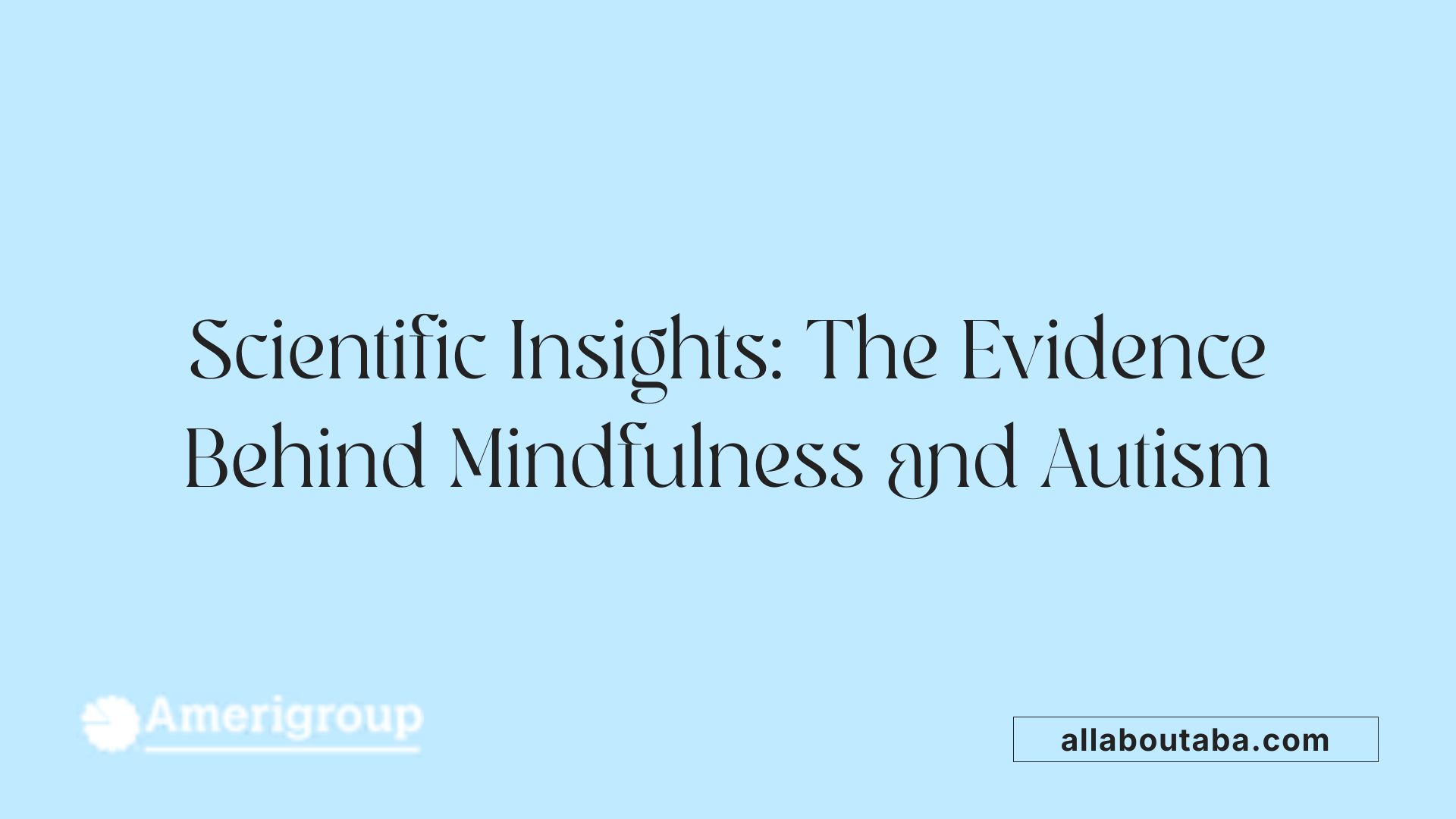
What scientific evidence and research support the use of mindfulness as an intervention for autism-related challenges?
Numerous research studies highlight the benefits of mindfulness practices for individuals on the autism spectrum. These studies include systematic reviews, controlled trials, and pilot studies that collectively show promising results.
Research indicates that mindfulness-based interventions (MBIs) help reduce psychological distress such as stress, anxiety, and depression in autistic individuals. For example, an open feasibility study involving autistic adults found that participants experienced significant reductions in perceived stress, along with improvements in coping skills. The study also reported that most participants adhered well to the program, and found it credible and beneficial.
In addition, smartphone app-based mindfulness practices lasting just six weeks have been shown to lead to long-term reductions in anxiety, stress, and negative emotions in autistic adults. These practices, which involved daily 10 to 15-minute exercises, yielded sustained benefits even after participants stopped practicing regularly.
Studies involving parents of children with autism reveal that MBIs can reduce parental stress and improve mindfulness awareness, creating a positive feedback loop that benefits both parent and child. In children with autism, tailored mindfulness activities such as deep breathing, sensory exercises, and mindful movement have been shown to support emotional regulation, attention, and social skills.
While the evidence to date is encouraging, most studies are moderate in quality, and more high-quality randomized controlled trials are necessary to confirm these findings and guide clinical practice. Nonetheless, the accumulating scientific data underscores the potential of mindfulness as a valuable tool to support mental health and daily functioning in autistic individuals across various ages.
Adapting Mindfulness for Different Age Groups and Needs
How can mindfulness techniques be adapted for children and adults with autism?
Mindfulness practices for children and adults with autism must be thoughtfully modified to suit their unique sensory sensitivities and learning styles. Standard programs designed for neurotypical populations often require adjustments to be effective and accessible.
For children, engaging activities such as sensory exploration with textures, sounds, and visual stimuli can be incorporated into mindfulness routines. Techniques like guided breaths, simple movement exercises like yoga or tai chi, and visual supports such as picture cards or visual schedules help improve focus and emotional regulation.
Adults benefit from structured routines that include short, manageable sessions—often 10 to 15 minutes—that they can practice independently at home or in outpatient settings. Guided visualization exercises or grounding techniques, such as the 5-4-3-2-1 method, help manage anxiety and sensory overload.
Personalization is crucial. Tailoring mindfulness routines based on individual goals, sensory preferences, and cognitive abilities promotes engagement and benefits. For example, some individuals may prefer tactile activities like squeezing stress balls, while others respond better to auditory cues or visual prompts.
Collaboration with autistic individuals and caregivers is essential to develop inclusive practices. This collaborative approach can include using sensory-friendly environments, reducing metaphoric language, and providing clear, predictable structures. Flexibility and gradual introduction of practices support successful adoption.
In sum, adaptive mindfulness strategies—such as sensory-based activities, movement, visual supports, and personalized routines—enhance emotional regulation, reduce stress, and foster overall well-being in autistic individuals across age groups.
Mindfulness Techniques for Neurodiverse Populations
What practical mindfulness techniques tailored for neurodiverse populations, including autistic individuals?
Effective mindfulness practices for neurodiverse groups are often designed to accommodate unique sensory, emotional, and attention needs. These techniques prioritize flexibility and customization to ensure accessibility and comfort.
A prominent approach involves sensory-focused exercises. These can include paying attention to textures, sounds, or sights in a controlled way. For example, focusing on the feel of textured objects or listening to calming sounds helps users stay present without feeling overwhelmed.
Movement practices like yoga or tai chi are also popular. These activities promote body awareness, balance, and gentle movement, which can help reduce stress and improve focus. For some, moving slowly through poses or gentle stretching provides a sensory-rich but calming experience.
Breathing and grounding techniques are central in many mindfulness routines. Diaphragmatic breathing, or deep belly breathing, is straightforward and effective in calming the nervous system. The 54321 technique—identifying five things you see, four you hear, three you feel, two you smell, and one you taste—can ground individuals in the present moment, especially during anxiety or sensory overload.
Incorporating visual, auditory, and kinesthetic supports enhances the practice. For example, visual guides, like picture cards or videos, can clarify instructions. Auditory aids, such as soft music or binaural beats, can help establish a relaxing environment. Kinesthetic activities, including gentle movement or tactile stimulation, further engage different senses and support focus.
To maximize benefits, mindfulness exercises should be scoped into short, manageable sessions, typically 5 to 10 minutes. Use of visual schedules and simple language makes instructions clearer, especially for children or individuals with attentional challenges. Multiple practice options, like guided apps or live support, accommodate different preferences.
In summary, practical mindfulness for neurodiverse populations combines sensory engagement, movement, breathing, and multisensory supports, emphasizing adaptability to meet diverse needs and promote emotional regulation.
Practical Strategies for Implementing Mindfulness with Children and Adults with Autism
How can mindfulness techniques be adapted for children and adults with autism?
Adapting mindfulness techniques for individuals with autism requires careful consideration of their unique sensory, cognitive, and emotional needs. Standard mindfulness programs like MBSR are often designed for neurotypical populations, so modifications are necessary to make them more accessible and effective.
One effective approach includes using sensory-based activities that provide tactile, visual, or auditory anchors to help focus attention. For example, incorporating textured objects, visual cues, or calming sounds can make mindfulness practices more engaging.
Guided visualizations tailored to individual preferences can also promote relaxation and self-awareness. Structured routines that repeat familiar procedures help reduce anxiety related to unpredictability.
Practices like controlled breathing exercises and grounding techniques—such as the 5-4-3-2-1 sensory awareness exercise—are valuable tools for managing sensory overload and emotional distress. Movement-based techniques like yoga or tai chi can help enhance body awareness and focus.
It is essential to personalize routines based on each person's goals, sensory sensitivities, and developmental level. Starting with brief sessions and gradually increasing duration supports better engagement.
Collaborating with autistic individuals and their caregivers to co-develop mindfulness routines fosters inclusivity and relevance. Flexibility and patience during practice help build trust and promote sustained participation.
In summary, successful adaptation involves blending sensory-friendly activities, visual supports, movement, and personalized pacing to ensure mindfulness practices are accessible and beneficial for those on the autism spectrum.
The Role of Mindfulness in Stress and Emotional Regulation Management
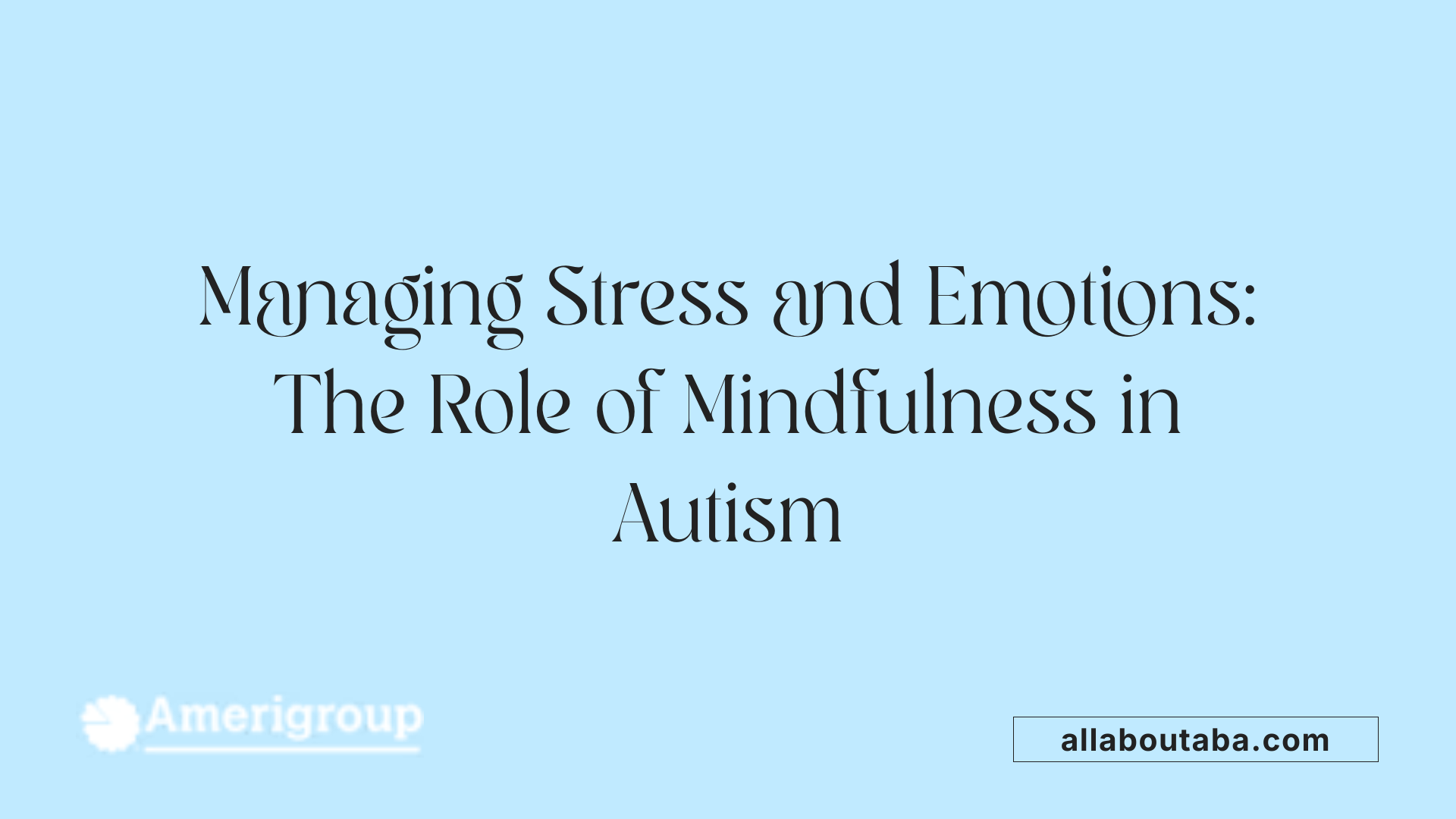
How does mindfulness help with managing stress and emotions in autistic individuals?
Mindfulness can be a powerful approach for helping autistic individuals handle stress and emotional challenges. By encouraging a better awareness of feelings and bodily sensations, mindfulness teaches individuals to stay present and recognize emotional responses before they escalate. This increased awareness allows for more effective regulation of emotions and reduces impulsivity.
For example, adapted mindfulness practices like sensory grounding exercises focus on making a person more aware of textures, sounds, and sights in the environment. Deep breathing and guided visualization help calm the nervous system and reduce overwhelming sensory experiences. These techniques can be easily integrated into daily routines, offering consistent support in managing anxiety and emotional reactivity.
Research indicates that such practices can diminish sensory overload and emotional distress. They also promote overall mental health, enhancing social skills and cognitive function over time. While these results are promising, the variability among autistic individuals highlights the need for further research to develop best practices.
Incorporating mindfulness into everyday life can create a helpful structure for emotional regulation. Whether through short daily exercises or longer guided sessions, these approaches aim to foster resilience and well-being in the face of stress.
Supporting Families and Caregivers through Mindfulness
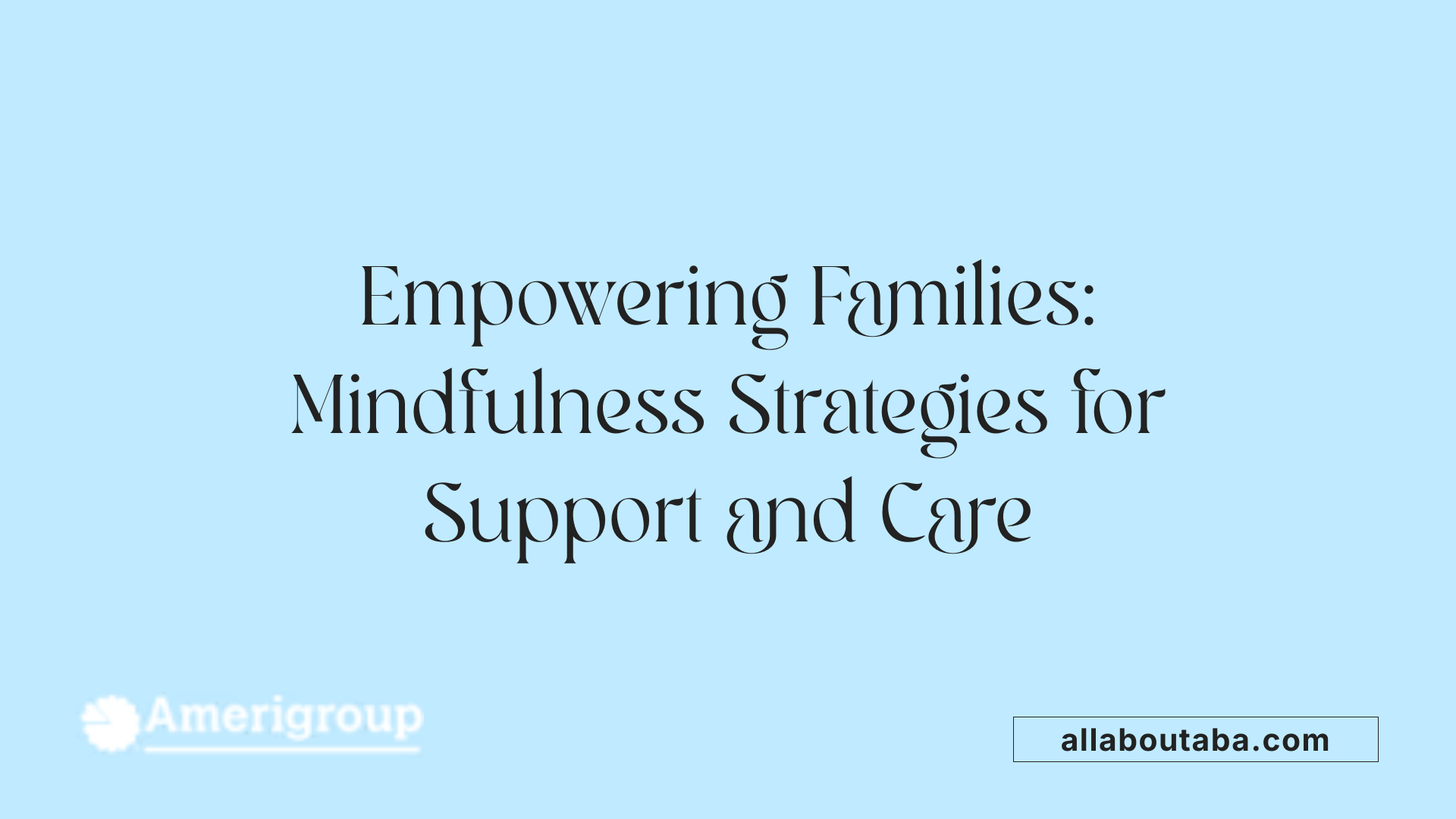
How can mindfulness practices support family dynamics and networks for individuals with autism?
Mindfulness practices are increasingly recognized as a helpful tool for enhancing family dynamics when caring for individuals with autism. These practices foster emotional regulation, improve communication, and build coping skills for both children and their parents.
Research and anecdotal reports suggest that mindfulness can reduce parental stress and improve parent-child interactions. For parents, practicing mindfulness helps cultivate patience and understanding, which are crucial when managing challenging behaviors or emotional difficulties. Lower stress levels allow parents to respond more calmly and effectively, creating a more harmonious home environment.
For children with autism, mindfulness can promote self-awareness, focus, and emotional regulation. These skills can translate into better social interactions and reduced behavioral issues. As children learn to be present and aware of their feelings, they can develop greater self-control and resilience.
Although empirical research is still emerging, initial findings and qualitative data support the idea that engaging in mindfulness can strengthen family bonds. Parents who adopt mindfulness techniques report feeling more connected and accepting of their child's unique behaviors, which can foster a more supportive and stable family network.
In sum, mindfulness offers a valuable approach for nurturing healthier family relationships, reducing stress, and creating a nurturing environment conducive to positive development for individuals with autism.
The Feasibility and Acceptability of Mindfulness Interventions in Autism
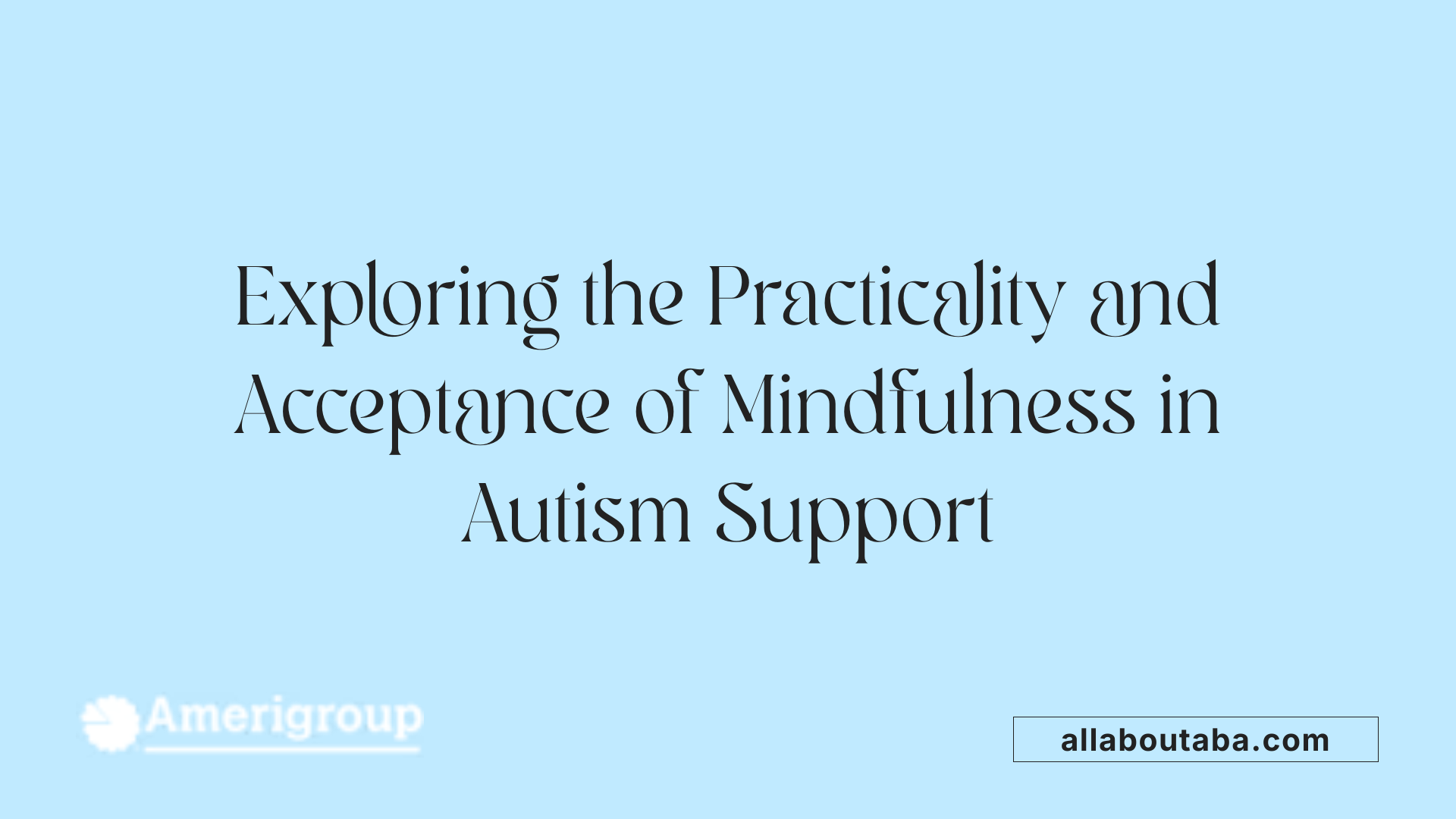
What scientific evidence and research support the use of mindfulness as an intervention for autism-related challenges?
A growing body of scientific research indicates that mindfulness can be a valuable tool for addressing various challenges associated with autism spectrum disorder (ASD). Multiple studies, including systematic reviews and individual trials, show that mindfulness-based interventions (MBIs) can help reduce stress, anxiety, and depression, which are common in autistic populations.
For example, an open feasibility study involving autistic adults without intellectual disabilities found that 79% of participants adhered well to a nine-session MBSR program, reporting significant reductions in perceived stress and improved stress management skills.
In addition, researchers at MIT’s McGovern Institute conducted a six-week mindfulness practice using a smartphone app. Participants practicing for 10 to 15-minute daily sessions experienced lasting benefits, such as decreased anxiety and negative emotions, and increased positive feelings. These findings suggest that even brief, accessible practices can contribute significantly to emotional well-being.
Furthermore, studies involving parents of autistic children demonstrate that MBIs can reduce parental stress and improve mindfulness awareness, potentially positively influencing parent-child interactions.
Despite promising outcomes, many studies point out that the overall quality remains moderate, indicating a need for more rigorous research. Still, current evidence supports that mindfulness interventions, when adapted appropriately, are feasible and acceptable for individuals with autism across various ages and levels of severity.
How are mindfulness practices adapted for the autism population?
Traditional mindfulness programs like MBSR were primarily designed for neurotypical adults; therefore, modifications are necessary to improve accessibility for autistic individuals. These adaptations include clearer communication, sensory considerations, structured session plans, and shorter meditation durations.
Practitioners often reduce the use of metaphoric language, incorporate sensory-friendly activities, and offer alternatives like movement-based practices such as yoga or tai chi. These tailored approaches help address attention difficulties and sensory sensitivities, making mindfulness more engaging and beneficial for autistic participants.
Feedback from autistic adults and parents
Autistic adults participating in adapted mindfulness programs report that practices are logical, credible, and worth recommending to peers. They notice reductions in stress, anxiety, and depression, with many valuing the accessibility of app-based and independently practiced techniques.
Parents of autistic children observe improvements in their own stress levels and resilience, which contribute to better emotional and behavioral outcomes for their children. Feedback underscores the importance of individualized approaches that respect neurodiverse experiences.
Is mindfulness safe and well-tolerated?
Overall, mindfulness interventions are considered safe for autistic individuals when appropriately adapted. Research reports no serious adverse events related to mindfulness practices. However, some participants may experience adverse effects, such as sensory overload or emotional discomfort, emphasizing the importance of professional guidance and tailored delivery.
In summary, evidence points to mindfulness being a feasible, acceptable, and beneficial approach for many with autism, especially when programs are designed with neurodiverse needs in mind. Ongoing research continues to refine these practices, aiming for broader implementation in clinical and community settings.
Enhancing the Impact of Mindfulness Through Tailored Interventions
What scientific research and expert opinions support the use of mindfulness as an intervention for autism-related challenges?
Scientific studies and knowledgeable experts agree that adapting mindfulness practices to suit the neurodiverse community can significantly improve their effectiveness. Traditional programs like Mindfulness-Based Stress Reduction (MBSR) were originally designed for neurotypical populations, which means they often need modifications to properly serve autistic individuals.
Research shows that when mindfulness practices are inclusive of neurodiversity awareness—such as minimizing metaphoric language or incorporating sensory-friendly exercises—participants are more engaged and experience greater benefits. For example, sensory considerations like reduced auditory or visual stimuli help autistic participants focus better and feel more comfortable.
Experts recommend individualized approaches tailored to personal sensory sensitivities, cognitive styles, and communication preferences. Guided intervention by professionals familiar with neurodiverse needs ensures exercises are accessible, safe, and meaningful.
Several studies highlight that with these modifications, mindfulness becomes a feasible, well-accepted, and safe option for autistic individuals. As research advances, there is a growing consensus among practitioners that flexibility, inclusiveness, and sensitivity are essential for maximizing mindfulness’s positive impact on autism-related challenges.
In summary, adapting mindfulness practices based on scientific evidence and expert advice fosters better engagement, amplifies benefits, and enhances overall well-being for people on the autism spectrum.
Summary and Future Directions
What does scientific research say about the effects of mindfulness on the well-being of individuals with autism?
Scientific research indicates that mindfulness interventions can effectively support the well-being of individuals with autism spectrum disorder (ASD). Multiple studies across different age groups—children, adolescents, and adults—show that mindfulness-based programs like Mindfulness-Based Stress Reduction (MBSR) and tailored activities such as yoga or sensory mindfulness are feasible and beneficial.
These interventions have been linked to reductions in behavioral problems, stress, anxiety, and depression, and improvements in social skills and emotional regulation. For autistic adults, smartphone app–guided mindfulness practices have demonstrated lasting benefits, with participants experiencing reduced stress, anxiety, and negative emotions, even after stopping practice. For children, engaging in activities like mindful movement, sensory exploration, and mindful eating can foster focus, calmness, and better emotional understanding.
What are current limitations and the need for further high-quality research?
Despite promising results, the overall quality of current evidence is moderate. Many studies involve small sample sizes, lack randomized control groups, or have short follow-up periods. Additionally, some mindfulness practices designed for neurotypical populations may not readily translate to neurodiverse individuals without modifications. Further high-quality, large-scale randomized controlled trials are necessary to confirm these findings, explore long-term effects, and identify optimal program components and adaptations for different levels of ASD severity.
How can mindfulness be integrated into therapy for autistic individuals?
Mindfulness has notable potential to complement existing therapies. Adjustments—such as simplifying language, reducing sensory overload, and structuring sessions—can improve accessibility and engagement. For example, incorporating mindful breathing, movement, and sensory exercises tailored to individual needs can boost emotional regulation and social responsiveness. Training professionals in neurodiversity-aware mindfulness techniques and developing standardized yet adaptable protocols will facilitate wider adoption in clinical settings.
Are there long-term benefits and considerations for sustainability?
Preliminary studies, including smartphone app interventions, suggest that benefits from mindfulness practices can endure over time. Autistic adults reported lasting improvements in well-being and stress management even after ceasing regular practice. However, maintaining engagement requires ongoing support, accessible resources, and personalized approaches. Continued research should explore strategies for sustaining benefits and integrating mindfulness regularly into daily routines, supporting the mental health and overall quality of life for autistic individuals.
A Promising Path Forward
While further research is essential to deepen understanding and optimize delivery, existing evidence underscores the valuable role of mindfulness practices in supporting autism well-being. By tailoring interventions to individual needs and integrating them with existing therapies, practitioners, families, and autistic individuals themselves can harness mindfulness’s full potential. Embracing this adaptable, accessible approach offers hope for enhancing quality of life, fostering emotional resilience, and strengthening the bonds within families and communities, paving a hopeful future for neurodiverse populations.
References
- Mindfulness-Based Interventions for People with Autism Spectrum ...
- Daily mindfulness practice reduces anxiety for autistic adults - MIT ...
- Mindfulness and Autism: Learning to Celebrate Neurodiversity
- 10 Ways Children with Autism Can Practice Mindfulness
- Mindfulness-based stress reduction for autistic adults: A feasibility ...
- The effectiveness of mindfulness-based interventions for children ...
- How mindfulness can support you and your family







